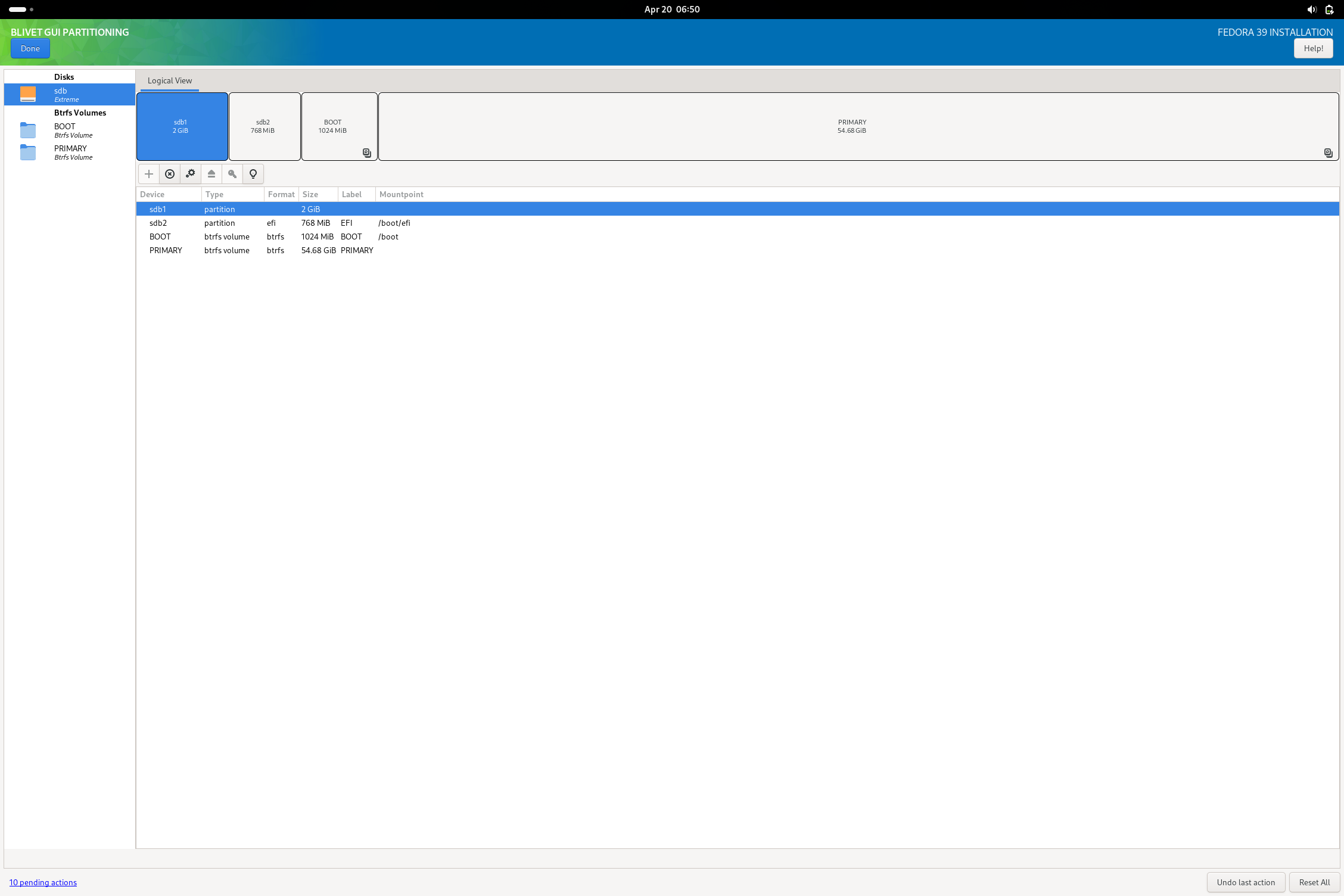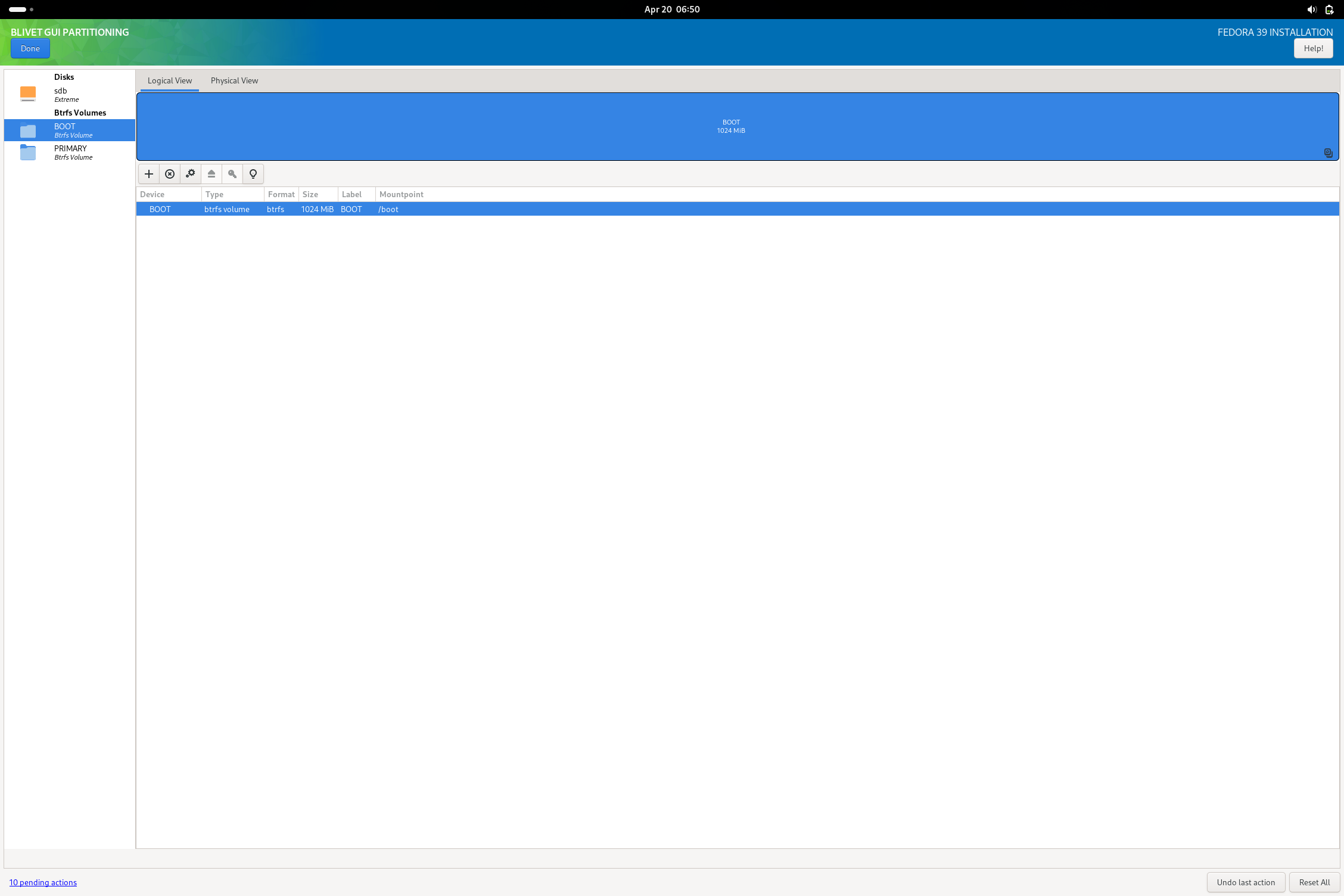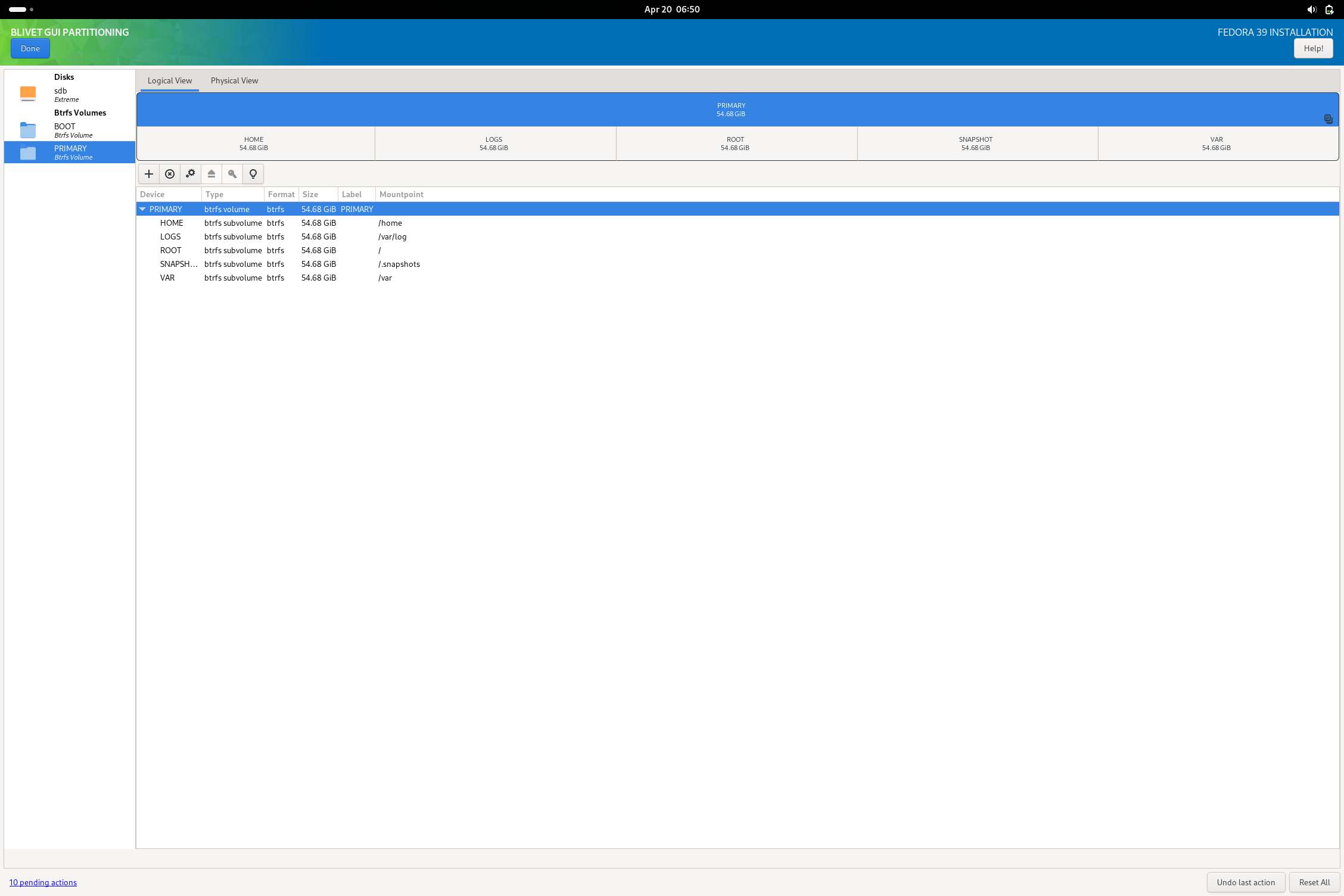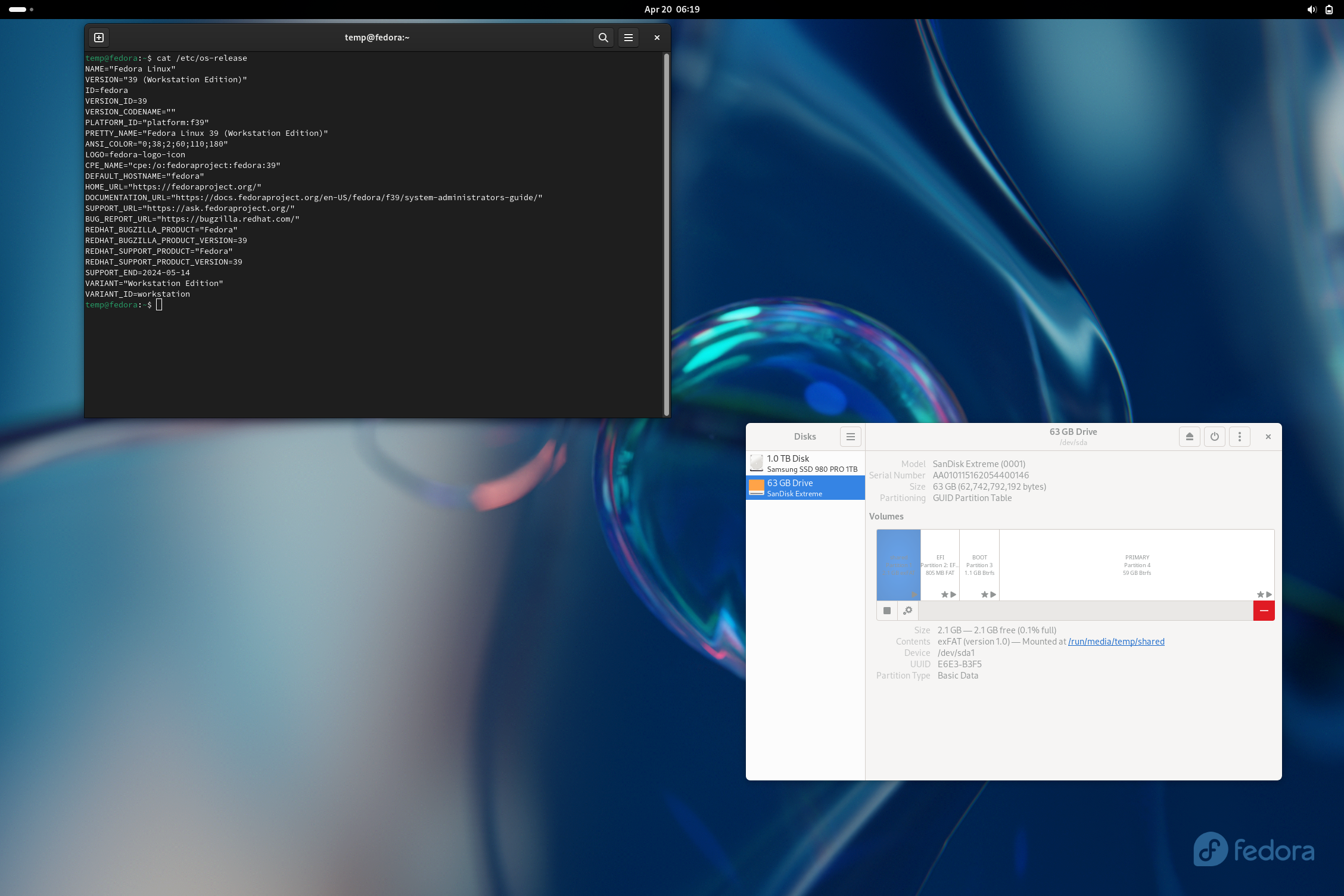As I understand it, this driver isn't ready for personal use unless you don't care about the contents of your btrfs partitions mounted on Windows.
For clarification, this is Vanilla, a performance mod Fabric pack, a Fabric content modpack, Forge modpack, etc. that you are launching? If it's the modpack that you describe needing 8gb of heap memory allocated, I wouldn't be surprised the java stack memory taking ~2.7 GiB. If it's plain vanilla, that memory usage does seem excessive.
On my Fedora KDE install on 40, hibernate is now an available power option. The install has been in upgrade cycles since 35 at this point. I would imagine that barring different DEs showing different power options being a possibility, it is more on detecting hardware compatibility for functional hibernation.
Based on how the script /usr/lib/kernel/install.d/99-grub-mkconfig.install (a script that runs on kernel installations) behaves, unless you are running in Xen Hypervisor or are on an architecture that doesn't support it, Fedora by default expects to have GRUB_ENABLE_BLSCFG set to true. This script is provided by the package grub2-common, so it's unlikely it can be removed without removing the GRUB bootloader's management system entirely.
More than likely, most customizations will work just fine with GRUB_ENABLE_BLSCFG set to true as long as you properly run grub-mkconfig (or just update-grub) after you make those changes so that they get applied to the bootloader portion of GRUB itself.
If for some reason you do absolutely need to disable BLS in order to get the customization you want, the proper way to enforce grub-mkconfig on new kernels would be to write a script in the /usr/lib/kernel/install.d/ directory titled like 98-grub-manual-mkconfig.install that would forcibly run the proper mkconfig command after kernel installation and initramfs generation.
This seems like a terrible bandage fix rather than letting the system mechanisms do what they are supposed to.
Checking inside /usr/lib/kernel/install.d/, you can see the mechanisms in place for installing new kernel entries. Not knowing what you did to your config (did you back it up before making changes?), you should check if the entries are being populated properly in /boot/loader/entries/. If they are, you have likely toyed with the BLS config in some way that broke being able to load dynamic entries without mkconfig.
If that is indeed the case, I wouldn't know exactly what you touched to break it, but this discussion forum might give some insight.
If this isn't the problem, it might be helpful to post your grub config minus any sensitive details to help determine what is going wrong.
The A485 is actually such a terrible laptop. I would never reccomend such garbage to anyone considering mine almost never worked properly. I had in three years have six main board replacements for various hardware faults. Not a single of the boards has been free from severe hardware faults.
I just did some testing in the past hour or so and did a portable install from scratch using the Fedora Workstation 39 iso. I'm not exactly sure what your hardware detection issue would have been, but I can say that Anaconda could detect both a USB flash drive and an external hard drive I had plugged in.
Going with the USB flash drive, I did skip using the automatic partitioning and went for using blivet to do my work. I did format the drive beforehand as I have always had issues with that drive properly accepting various partitioning commands (the installer no exception as tested). I did reserve a partition for a shared storage filesystem, but didn't actually give it a filesystem here.
In blivet, here is a sample of the kind of partition schema I was talking about (something that might be helpful to OP or anyone else that wants to try this setup):



I was able to then complete the install as normal and boot into the finished USB drive. I noted a small non-fatal complaint from grub on boot, but I imagine this is fixed with updating the system. All systemd units boot without failure and I am able to get the system working with minimal issue. The only real issue I could note is that the installation is very sluggish (due to it being on a flash drive rather than an external ssd or some other more suitable media). After booting, I then opened Disks and added the missing exfat (or NTFS) filesystem I reserved a partition for. The reason I didn't do this in blivet during install is because the option doesn't actually exist to make an exfat fs in the tool.

Hopefully, this comment is helpful toward getting such a setup working.
EDIT:
Something I did notice with GRUB on Fedora Workstation 39 is that by default, the menu will not show unless pressing escape on boot. There is a useful AskUbuntu post that explains in detail how to access the grub menu and how to change it to behave in a better fashion for a multiboot system.
So you executed KDE's auth agent in a terminal and then ran the mysql service through the same terminal and everything worked? If so, that's good. I believe the only thing missing to getting SQL Workbench working is by having your authorization agent of choice launched in your i3 .xinitrc file. That way it should initialize any environment variables for your full graphical session rather just for a single terminal.
Just a wild guess, but does your i3 setup have Polkit setup fully like it would be in KDE? The "the name is not activatable" is a string typically stemming from DBus. Especially for potential cross-user services that may require various permission sets, polkit is often utilized to bridge what is necessary. If you don't have an authentication agent setup for your i3 desktop, you should probably set one up, even if it is something basic like xfce's or lxqt's.
I am not sure if jest, but you could always take a few seconds at protondb to see that yes, all of those games do in fact run on Linux. Forza in particular seems to have issues for some users, but everything else works with minimal hassle.
Reading through the link chain, it seems the Western Digital drives being shipped in those laptops really should have never made it into consumers' hands.
The kernel argument
nvme_core.default_ps_max_latency_us=5500is being used to restrict the power state latency in order to keep the drive out of its lowest power state (because of course yet another cheaply-made device has terrible power state management).While most distros generally expect NVMe drive to not completely cease functioning while at idle (as should be expected really), AntiX is likely keeping the drive above its minimal power state. Whether this is intentional, unintentional, or from a lack of general power state management provided by the distro isn't something I know. It would require some digging in the source tree for the distro most likely to find if there are any deliberate restrictions to power saving, especially regarding NVMe.